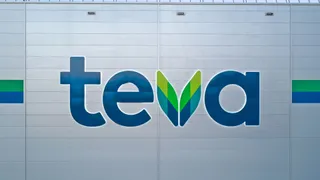Federal Circuit rules against USPTO on Patent Term Adjustment case
The US Court of Appeals for the Federal Circuit has upheld a ruling which found that the US Patent and Trademark Office (USPTO) had been incorrectly calculating Patent Term Adjustment lengths (PTA).
The US District Court for the Eastern District of Texas first ruled against the USPTO on the issue in 2012, finding in favour of pharmaceutical company Exelixis.
In a subsequent decision, the US District Court for the District of Columbia also ruled in favour of Swiss pharmaceutical company Novartis AG on the same issue.
The USPTO appealed against the judgements culminating in the Federal Circuit’s decision on both cases, which was published on January 15.
A PTA is a period of adjustment of a patent’s term which is caused by a delay in examination proceedings on applications.
The USPTO is obligated to meet time requirements during examination, including a guarantee of taking no more than three-years on an application’s pendency.
If the requirements are not met, the patentee is given PTA and, under Section 154(b)(1)(B) of the Patent Act, there is a guarantee of a one-day term extension for every day it takes the patent to issue following on from the three year cut-off date.
That period is referred to as a “B period.”
However, during the trial, the USPTO said that if a Request for Continued Examination (RCE) had been filed [as it had in these cases], an applicant should have its B period delay reduced, depending on how long it took for the patent to be given issuance.
An RCE is a mechanism to submit claim amendments on patents. It is used to conclude prosecution when it is indicated that additional examination is necessary to determine whether the amended claims are allowable.
The USPTO said that, even if the patent had been allowed, any time up until the patent issues should be excluded from the PTA awarded to the patentee if there has been continued examination.
However, Novartis argued that the “time consumed by RCE examination” should be limited to the time before allowance, as long as no later examination actually occurs while waiting for its issuance.
The Federal Circuit agreed, saying: “We reject the USPTO’s view that the time after allowance, until issuance, is ‘time consumed by continued examination’ and is so excluded from adjustments given to the patentee.
“Such time from allowance to issuance undisputedly would count toward the USPTO’s three-year allotment in a case not involving a continued examination. There is no basis for distinguishing a continued-examination case.”
In a statement, Honigman Miller Schwartz and Cohn LLP (Honigman), which represented Exelixis, said the case would have a “significant impact” on the calculation of PTA in cases where the applicant filed an RCE.
“It will benefit clients with patents in which the value of the invention remains, or is even amplified, towards the end of the patent term,” it said.
“The outcome of this case has ultimately determined how PTA is interpreted for all patentees. In particular, companies in the pharmaceutical and biotechnology industries are likely to benefit, as the regulatory approval process often results in the product being introduced into the market late in the term of the patent,” Honigman added.
The patents in question for Exelixis were US numbers 8,067,436 and 7,989,622, and numbers 7,807,155, 7,968,518, and 7,973,031 for Novartis.
Already registered?
Login to your account
If you don't have a login or your access has expired, you will need to purchase a subscription to gain access to this article, including all our online content.
For more information on individual annual subscriptions for full paid access and corporate subscription options please contact us.
To request a FREE 2-week trial subscription, please signup.
NOTE - this can take up to 48hrs to be approved.
For multi-user price options, or to check if your company has an existing subscription that we can add you to for FREE, please email Adrian Tapping at atapping@newtonmedia.co.uk

